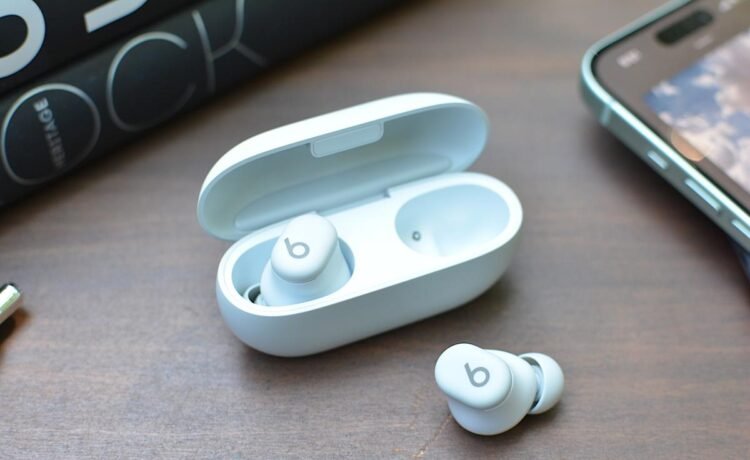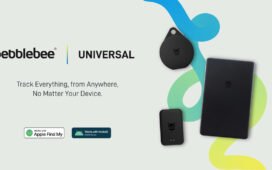The idea of Beats wireless earbuds for under $100 is certainly compelling. Until now, the company has operated in the $150-$200 range, except for the $70 , which offers a great collection of features with good sound quality and a comfy fit. However, much of the competition has been keen to offer buds for considerably cheaper prices, doing so by limiting functionality to the basics. With the (), Beats has its cheapest true wireless earbuds yet and manages to retain much of its product DNA. But, the company had to dial things back to bring the price down, so don’t expect these earbuds to wow you with performance.
The Solo Buds cover the basics, but that’s about it. Audio quality is flat unless you’re listening to Dolby Atmos content in Apple Music, but at least the earbuds are comfy with long battery life.
- Very affordable
- Long battery life
- Solid audio performance with spatial audio content
- Comfortable fit
- Audio is flat at times
- No ANC or wear detection
- Not IP-rated
- Subpar call quality
Beats Solo Buds design
The Solo Buds carry the same overall earbud design that Beats has favored for a while now. A key difference between these and the , though, is that the Solo Buds are slightly larger to accommodate its bigger batteries. The new model still offers the onboard controls on an angled flat panel, complete with the company’s trademark “b” branding. The good news is that this earbud shape has always been comfortable to wear for long periods of time and that hasn’t changed here. And despite the closed acoustic architecture of the Solo Buds, added micro vents relieve that plugged feeling that can plague earbud wearers after several minutes of use.
Where the Solo Buds deviate from Beats’ previous models is the case. This thing is tiny. In fact, according to the company it’s 40-percent smaller than the Studio Buds + case, which wasn’t enormous by any means. This is because Beats removed the battery from the case. The company claims that doing so makes the Solo Buds more environmentally friendly and it’s one less battery to worry about degrading over time.
If you’re into the clear version of the Studio Buds +, you’re in luck. There’s a transparent red option for the Solo Buds. But, there’s also some bad news: only the case is transparent; the buds themselves are opaque
Software and features
Like other recent Beats products, all of the software for iPhone owners is baked into iOS. On Android, you’ll need the Beats app to customize the touch controls or download software updates. On both platforms, you’ll get one-touch pairing, fast pair and location-tracking help for lost earbuds. iOS users get the benefit of iCloud pairing with other devices, Apple Watch hand-offs, as well as audio sharing with AirPods and Beats products. On Android, you’ll be able to automatically pair with any device on your Google account and take advantage of multipoint Bluetooth pairing.
Since the Solo Buds only have the most basic features, there’s not much else to list out. However, the company does allow you to reconfigure the press-and-hold control to adjust volume. By default, this action summons your device’s voice assistant on both earbuds. And that’s really the extent of things. There’s no hands-free Siri, no transparency mode, no active noise cancellation (ANC), no wear detection and no support for Apple’s Adaptive EQ.
Sound quality on the Beats Solo Buds
For a set of $80 earbuds, the best sound quality you can expect is slightly above average. Most of the time, you get something that’s serviceable, but not necessarily tuning you’d use to listen to the finer details of an album. Beats is on a good run with sound quality on the Studio Buds line and the , but it understandably had to cut corners in places to slash the price on the Solo Buds. It turns out that audio performance is one of those areas.
The Solo Buds still retain some decent detail in the sound profile, but overall, the tuning doesn’t offer the dynamics of the Studio Buds +. Songs are flat and the mix is subdued, lacking punchy highs or booming bass at times. Bilmuri’s “Emptyhanded,” for example, has some loud, distorted guitars that provide the rhythm of the track. Those instruments typically soar and have plenty of texture on pricier earbuds, but here they lack dimensionality and stand out less from the rest of the mix than usual. These aren’t the earbuds in the company’s lineup you’ll want to choose if sound quality is of utmost importance. Instead, the Solo Buds get the job done in a workman-like fashion, without much flash or excitement.
One advanced sound feature that Beats did include is Spatial Audio. It’s automatic and works with songs from Apple Music that are available in Dolby Atmos. Albums like Justice’s Hyperdrama and Wyatt Flores’ Half Life have more robust bass and clarity, sounding less compressed than some other “regular” albums on the Solo Buds. It’s still not flagship-level audio performance, but it’s noticeably improved compared to non-Atmos content.
Call quality
When it comes to calls, Beats only employs one microphone on each side on the Solo Buds. This definitely impacts voice quality and you’ll sound like you’re on speaker phone more so than on pricier sets of earbuds. The company does a great job of blocking background noise, but during my tests in loud environments, that battle against distractions further degraded call performance. In a room with a loud fan, my voice was choppy compared to in a quieter spot with minimal environmental roar.
Beats Solo Buds battery life
Beats claims the Solo Buds will last up to 18 hours on a charge, which is double or, in some cases, triple what much of the competition offers. The company opted for larger batteries in the earbuds and removed the one from the case, so there’s no extended time to be gained from docking the buds. When they’re dead, you have to put them in the case and plug the case into an outlet with a USB-C cable.
During my tests, I came in one hour shy of Beats’ stated figure. This isn’t too much of a disappointment since I still got 17 hours, and it’s likely due to my setting the volume at 75 percent and leaving the Solo Buds unused for over 24 hours. If you find yourself in a pinch, you can get an hour of playback in five minutes of charging. What’s more, you can use your phone to get the tunes going again with charging via a USB-C connection on both iPhone (15 and up) and Android devices.
Since there’s no battery in the case, there isn’t an LED indicator to show you the charging status of the Solo Buds. You can get that info on your phone by tapping the onboard controls while the earbuds are in the case and close by. It’s inconvenient, but you do get an exact figure instead of just a green or red light.
The competition
Beats has entered an increasingly crowded market for earbuds under $100. Not only are big names like Bose or Sony dropping new flagship models every year, but the likes of Anker, JLab and Jaybird are also debuting more ultra-affordable options on a regular basis. And some of them cost less than $50. The current , according to my colleague Jeff Dunn, is the . Currently available for $50, the A40 offers solid ANC, multipoint Bluetooth and respectable sound quality. Battery life is 10 hours and the buds are rated IPX4 for water-resistance, but there’s no wear detection and the A40 isn’t great for calls, either.
Wrap-up
The are a smart play for Beats, and I have no doubt the company will sell a lot of them. They’re good enough for most people, even without features like active noise cancellation, transparency more and wear detection. There’s some solid audio performance with songs in Apple Music, but overall sound quality is flat and lacks the oomph on the Studio Buds + or Beats Fit Pro. However, long battery life and a comfy fit mean you can wear these all day long, and those two things alone might be enough to make up for the Solo Buds’ sonic shortcomings – especially for $80.















